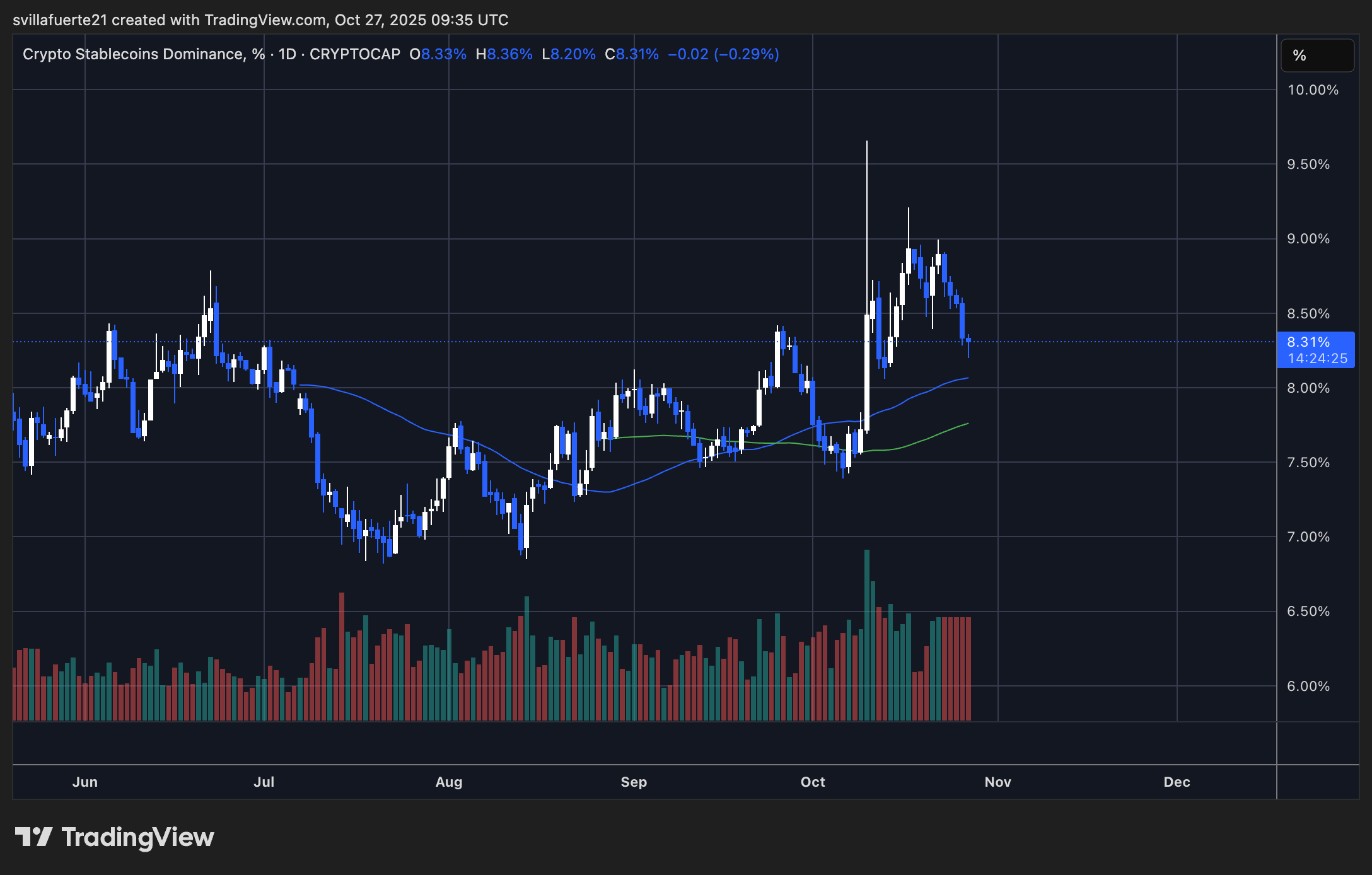Japan, that most punctilious of nations, has at last taken a bold step into the regulated stablecoin era with JPYC EX, a fully licensed digital yen born of the revised Payment Services Act. One might imagine the Queen herself would be most pleased to witness such a union of tradition and innovation, though one suspects she’d prefer a tea party to a blockchain. This moment, dear reader, marks a turning point in Japan’s financial affairs, bridging the staid world of banking with the chaotic charm of Web3.
Building upon earlier iterations of JPYC, the new JPYC EX is a marvel of compliance and yen-backed stability, designed to connect the nation’s banking system to blockchain commerce, DeFi, and cross-border payments. With full legal authorization and asset backing, it positions the yen as a future cornerstone-though perhaps not of global finance, but of our collective imagination.
According to CryptoQuant, the stablecoin market now exceeds $150 billion, forming the backbone of liquidity for crypto markets, DeFi protocols, and global payments. Analysts from Citi and Bloomberg predict this figure may swell to between $1.6 and $4 trillion by 2030. Within this grand crescendo of growth, JPYC is forecasted to claim roughly 2% of the market, reaching a valuation of around $70 billion. A modest ambition, if one considers the audacity of mere existence in such company.

A Fully Regulated Digital Yen Bridging Japan’s Finance and Web3
What distinguishes JPYC EX from its stablecoin peers is its triumphant marriage of regulatory clarity, asset backing, and technical versatility. Each token is collateralized by domestic bank deposits and Japanese government bonds, ensuring transparency and stability. One might say it is the Jane Eyen of stablecoins-earnest, reliable, and quietly revolutionary. This structure renders JPYC EX one of the world’s most legally robust stablecoins, a benchmark for compliance-driven innovation in digital finance, though one suspects it will require a stiff upper lip to endure the wilds of DeFi.
Built on Ethereum, Polygon, and Avalanche, JPYC EX offers instant yen transfers with near-zero fees-a boon for businesses and individuals alike. It supports commerce, payroll, peer-to-peer payments, and DeFi applications, offering the efficiency of blockchain without sacrificing legal or operational safeguards. A feat akin to balancing a teacup on a horse’s back during a thunderstorm.
JPYC EX also aligns closely with Japan’s digital transformation strategy, which seeks to unite traditional finance with emerging Web3 systems. By serving as a settlement layer for e-commerce platforms, NFT marketplaces, and cross-border transactions, the stablecoin enables instant yen transfers across Asia, lowering costs and increasing accessibility for international trade. One might imagine Mr. Darcy himself would approve, though he’d likely demand a more refined interface.
Looking ahead, analysts forecast JPYC’s market capitalization could reach $70 billion by 2030, representing roughly 2% of the global stablecoin market. This growth potential underscores Japan’s ambition to establish the digital yen as a key pillar of the decentralized global economy. With its blend of regulatory trust, technological precision, and global reach, JPYC EX may yet redefine how national currencies operate in the Web3 era. Or, as Mrs. Bennet might say, “It’s a fine match, if you ask me.”
Stablecoin Dominance Shows a Cooling Phase After Recent Surge
The chart reveals that stablecoin market dominance currently rests at 8.31%, following a sharp rise earlier in October that pushed the ratio above 9%. Such levels often signal heightened demand for liquidity and safety, as traders seek refuge from the tempests of crypto markets. One might liken it to a ballroom where all the guests have fled to the gardens to avoid the rain.
Over the past few months, dominance has steadily climbed from the 7.3%-7.5% range, reflecting a cautious sentiment as Bitcoin and major altcoins face selling pressure. However, the recent pullback suggests some funds are beginning to rotate back into risk assets, a potential early sign of market stabilization. A development as thrilling as a proposal in the rain, albeit with fewer hems soaked by puddles.

Technically, the dominance remains above both the 50-day and 200-day moving averages, indicating a broader uptrend in liquidity positioning. If this level holds, it may serve as a buffer during continued volatility. Conversely, a sustained drop below 8% could signal traders are redeploying capital into crypto assets, possibly fueling short-term rallies. A delicate dance of caution and ambition, much like navigating a minuet with a pocketful of gold.
Stablecoin dominance remains elevated-a sign that market participants still prefer holding dry powder. Until dominance begins a more decisive decline, this cautious stance will likely persist, underscoring the market’s fragile balance between risk-off sentiment and the readiness for re-entry into volatile assets. A state of affairs as precarious as a house party where the punch bowl is half-empty. 🧵
Read More
- TIA PREDICTION. TIA cryptocurrency
- USD PKR PREDICTION
- USD VES PREDICTION
- GBP USD PREDICTION
- Gold Rate Forecast
- BCH PREDICTION. BCH cryptocurrency
- FLR PREDICTION. FLR cryptocurrency
- OP PREDICTION. OP cryptocurrency
- EUR MXN PREDICTION
- FTN/USD
2025-10-27 22:02